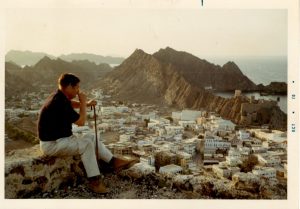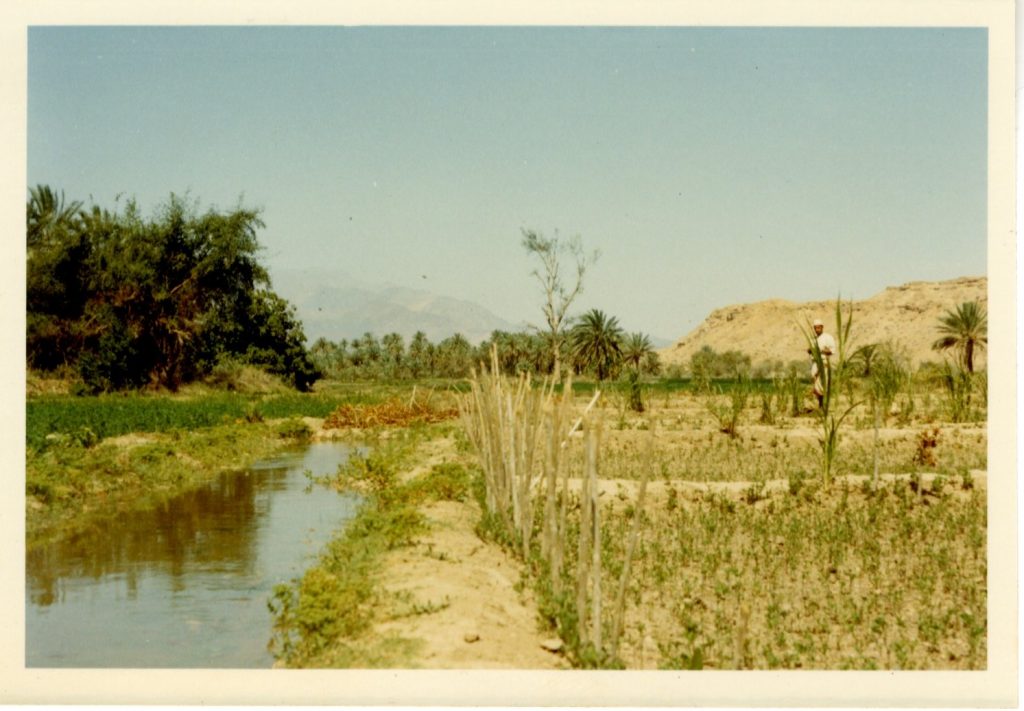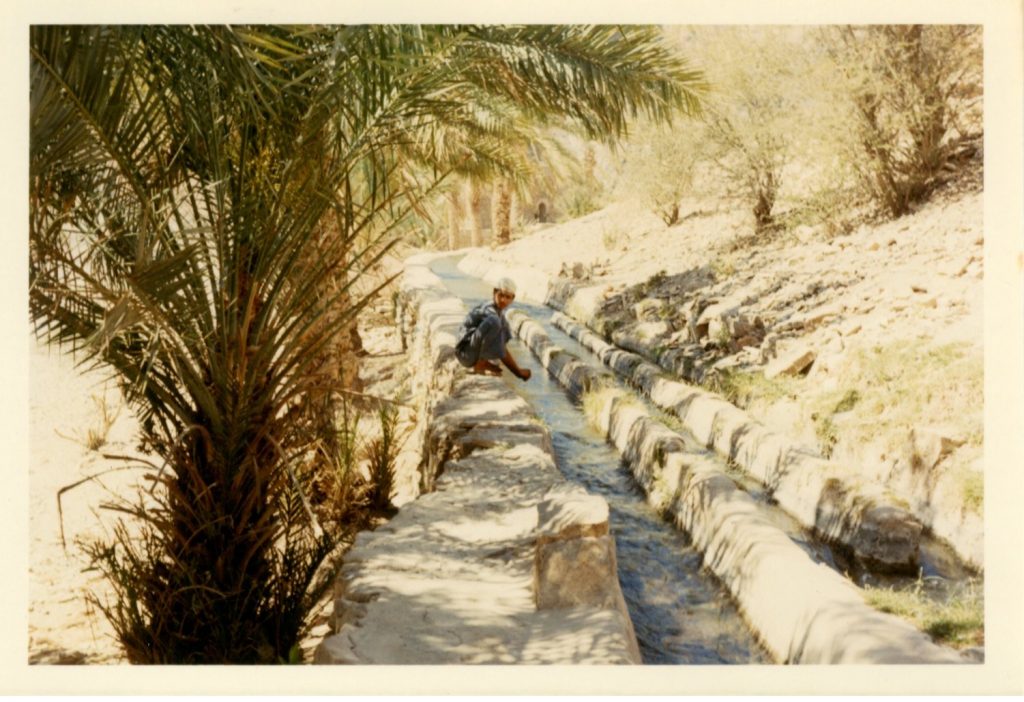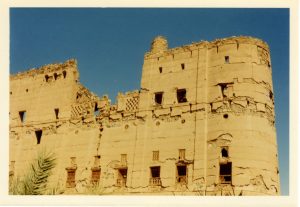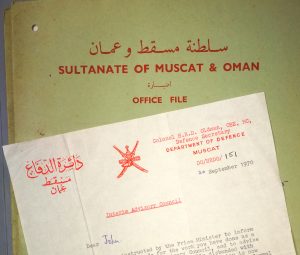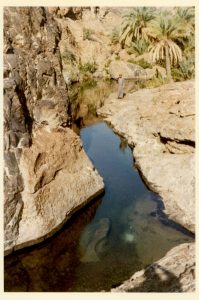Two months have passed since my last blog post and I’m pleased to report that since then two more sections of the Common Ground archive have been catalogued. Following on from cataloguing the sections of the archive relating to the projects Second Nature, Holding Your Ground and Parish Maps, the next section I was keen to tackle concerned the England in Particular project. There were several reasons for this decision: 1) this section of the archive is very large (therefore best not left to the end!), 2) it is relatively well organised (music to an archivist’s ears!), and 3) it has great research potential (so the sooner it is catalogued, the sooner it can be used!).
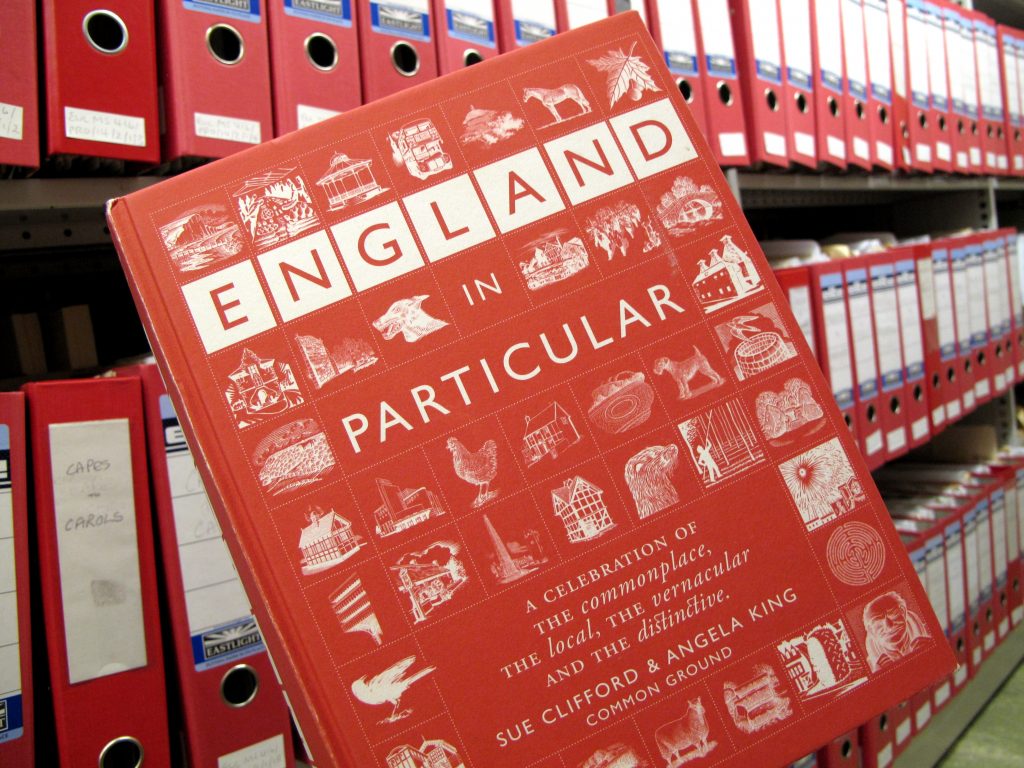
The England in Particular project grew out of Common Ground’s Campaign for Local Distinctiveness. ‘Local distinctiveness’ was a concept coined and developed by Common Ground from as early as 1985, and it was used by the charity to explore ‘the relationship between people and everyday places, and the bonds between nature, identity and place’ (S. Clifford and A. King, ‘Local Distinctiveness: Place, Particularity and Identity’ (1993), p. 7). The aim of the England in Particular project was to create an encyclopedia of local distinctiveness and vernacular culture in England that would demonstrate the ‘extraordinary richness of our everyday surroundings; the landscapes, buildings, people and wildlife that give meaning to the places we know’ (S. Clifford and A. King, ‘England in Particular: A celebration of the commonplace, the local, the vernacular and the distinctive’ (2006), p. ix).
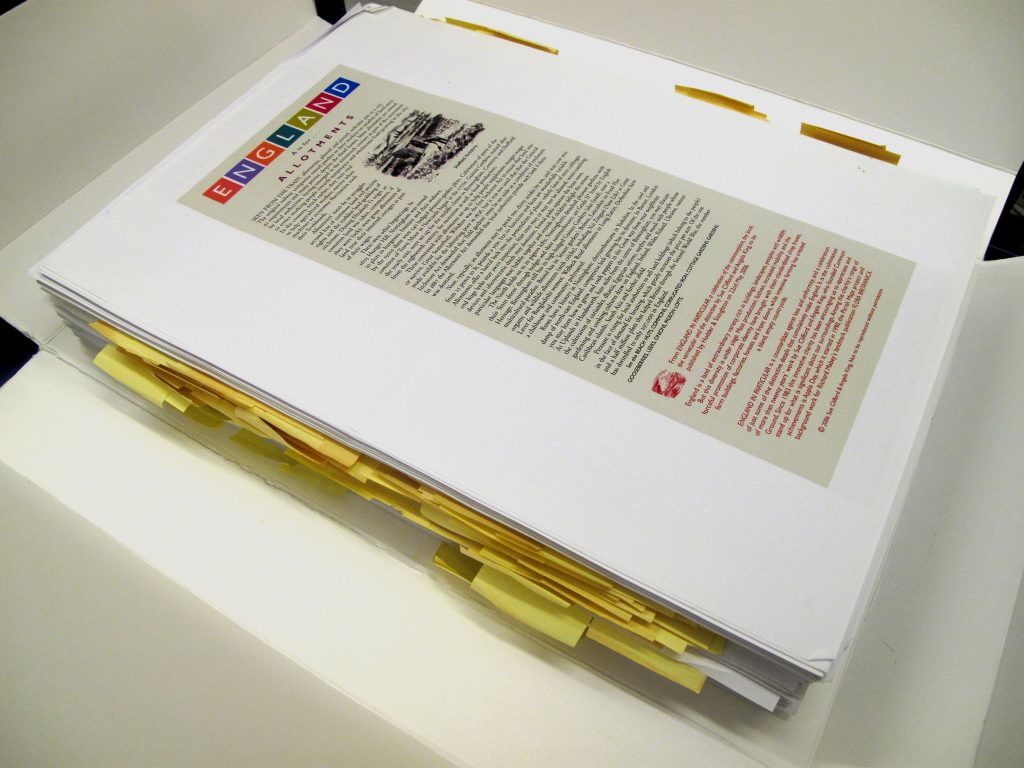
EUL MS 416/PRO/14/1/19 – Colour proof for ‘England in Particular’ with annotations (and many sticky notes!)
In 2002, Common Ground received a grant of £80,000 from the Department for Environment, Food & Rural Affairs (Defra) to fund the project. The project was launched with a media release on 17 April 2002, in which Common Ground asked ‘to hear from people about their local stories, details, examples, observations about the particularity of everyday places’ (EUL MS 416/PRO/14/3/1). This local knowledge was collected by Common Ground and, in addition to the charity’s own research, was used to compile the finished book, entitled ‘England in Particular: A celebration of the commonplace, the local, the vernacular and the distinctive’. It was published by Hodder & Stoughton in 2006 and became the largest single publication produced by Common Ground.
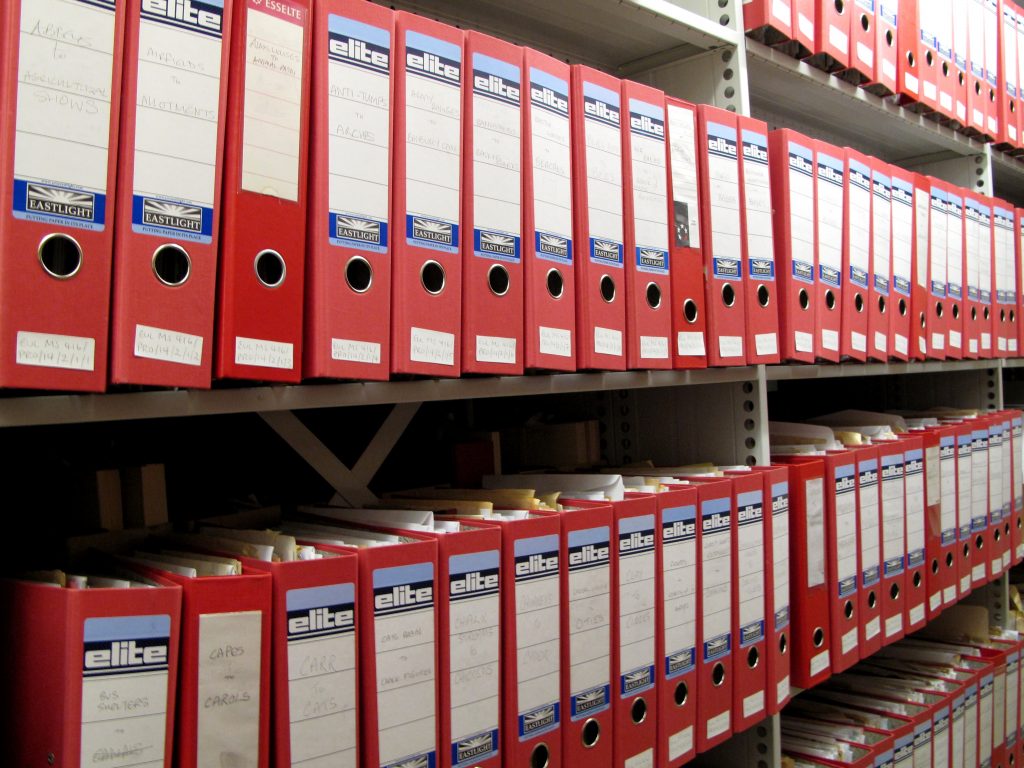
EUL MS 416/PRO/14/2/1 – Research material for ‘England in Particular’, arranged alphabetically
As the project required extensive research by the charity, research material constitutes a large proportion of this section of the archive. Common Ground organised most of this material into red lever arch files (see photograph above) and divided it alphabetically into sections by subject within each file – very much like an encyclopedia! Each file is labelled with the first and last subject represented in the file; for example, the very first file in this series is labelled ‘Abbeys to Agricultural Shows’ and the last (the 102nd file!) is labelled ‘Windsor Chair to Zoos’. To make this research material more searchable, I have listed all the subjects represented in each file in the file descriptions. You can find these descriptions in our online catalogue here. Not only will this help researchers to quickly locate material on specific subjects, but it will also enable the identification of subjects that Common Ground researched but did not include in the book.
The England in Particular section of the archive also includes book proposals, book proofs, planning documents, correspondence, briefs for illustrators, press clippings, and promotional postcards and posters. These papers provide considerable insight into the publication process, including the sourcing of artwork, as well as the publicising of the project. You can find the full catalogue description for the England in Particular section here or by clicking the image below.
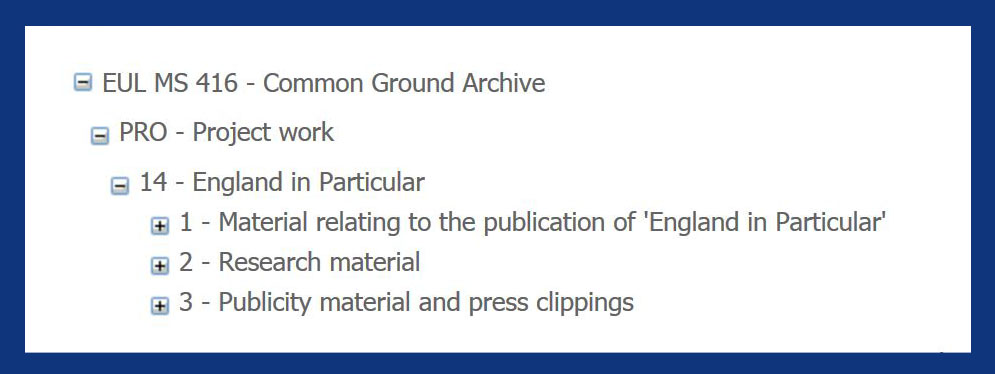 The description and repackaging of material relating to England in Particular was time consuming and the research material in particular took several weeks to catalogue. Although I enjoy cataloguing, performing the same task for prolonged periods of time can become monotonous, so halfway through the process I decided to take a short break from England in Particular (one of the largest sections of the archive) and spend a week cataloguing material relating to another of the charity’s projects: Producing the Goods (one of the smallest sections of the archive).
The description and repackaging of material relating to England in Particular was time consuming and the research material in particular took several weeks to catalogue. Although I enjoy cataloguing, performing the same task for prolonged periods of time can become monotonous, so halfway through the process I decided to take a short break from England in Particular (one of the largest sections of the archive) and spend a week cataloguing material relating to another of the charity’s projects: Producing the Goods (one of the smallest sections of the archive).
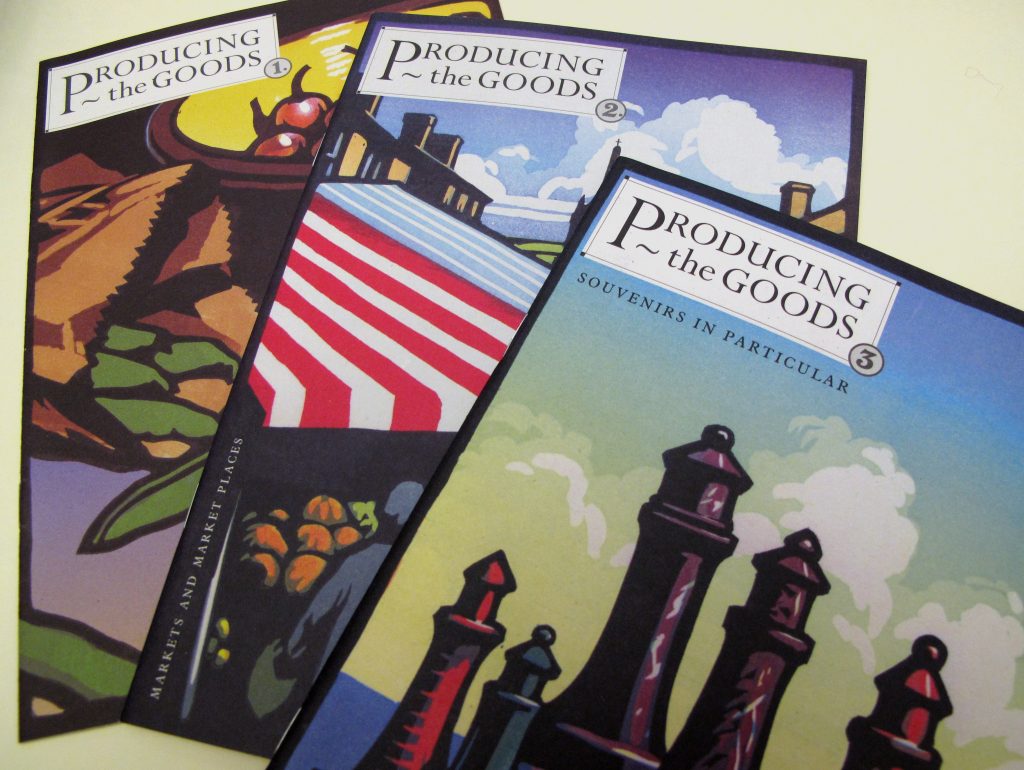
EUL MS 416/PRO/15/1/7 – Copies of Common Ground’s Producing the Goods pamphlets
Common Ground worked on the Producing the Goods project between 2005 and 2007. The aim of the project was to promote local, ethical and sustainable production and consumption of goods, including food and drink, markets and market produce, and souvenirs. The project was supported by Defra’s Environmental Action Fund, and the main output of the project was the publication of three pamphlets: ‘Goods that reflect and sustain locality, nature and culture’, ‘Markets and Market Places’ and ‘Souvenirs in Particular’ (see photograph above). In addition, Common Ground launched a ‘Souvenirs in Particular’ campaign to encourage the production of locally distinctive and locally manufactured souvenirs.
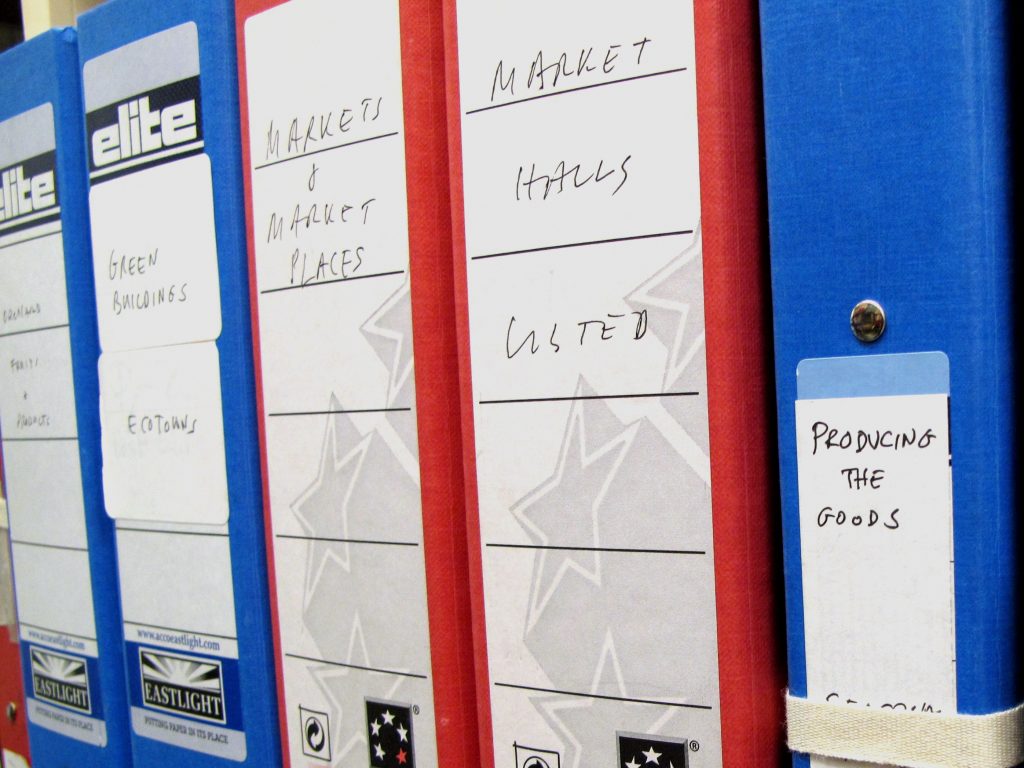
EUL MS 416/PRO/15/2 – Research material in the Producing the Goods section of the archive
This section of the archive comprises drafts of the pamphlets, press releases, planning documents, correspondence, reports, press clippings, notes, and research material. In addition to these papers, this section of the archive also includes a number of objects! In the 2000s, Common Ground collected several examples of local products and souvenirs, which it kept with its archive (see photograph below). Unfortunately, the box of souvenirs also contained some food items (including three Cornish Fairings biscuits!), which I had to dispose of so as not to attract mould or pests to the archive. However, the packaging has been retained wherever possible, and I made a note of and photographed all food items that were removed from the archive.
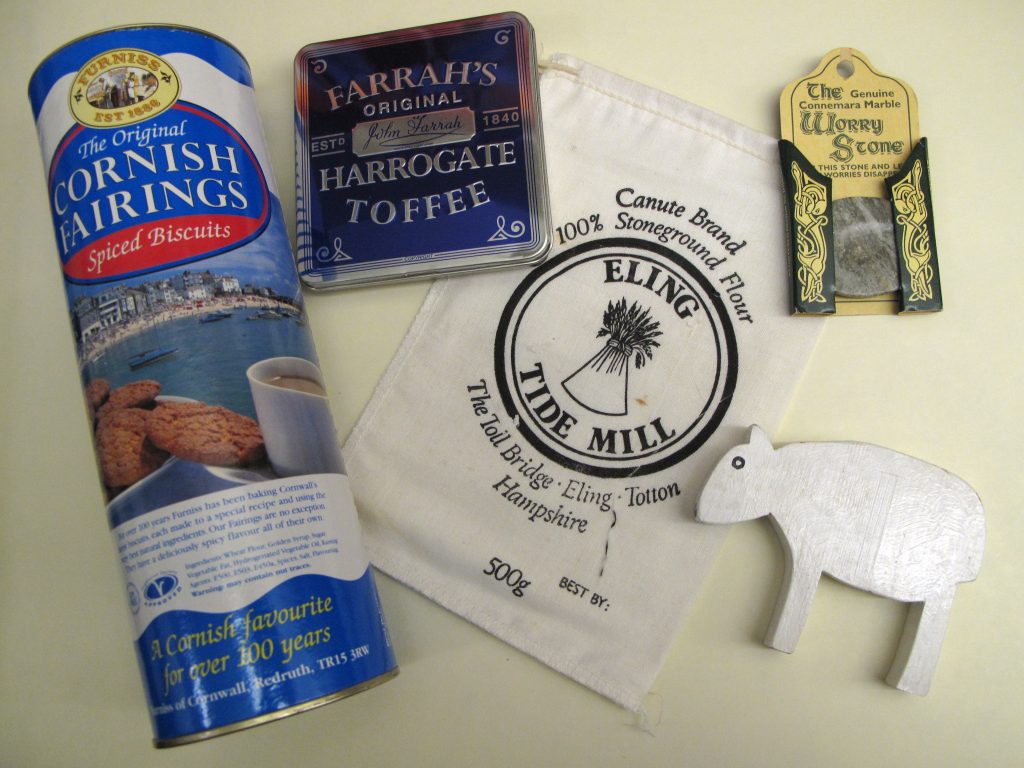
EUL MS 416/PRO/15/3 – Examples of local souvenirs and products
You can find the full catalogue description for the Producing the Goods section here or by clicking the image below.
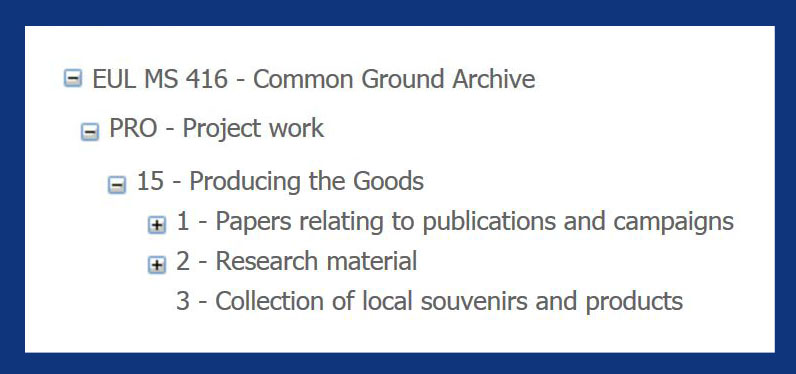 England in Particular and Producing the Goods were the last Common Ground projects completed by the founders and co-directors of the charity, Sue Clifford and Angela King, before they retired and deposited the Common Ground archive with Special Collections at the University of Exeter in 2013. Above all else, the cataloguing of these sections of the archive impressed upon me the sheer scale of the research conducted by Common Ground for its projects, whether big or small. This intensive research enabled Common Ground to construct evidence-based arguments with which to promote local distinctiveness and encourage people to care for their local environment.
England in Particular and Producing the Goods were the last Common Ground projects completed by the founders and co-directors of the charity, Sue Clifford and Angela King, before they retired and deposited the Common Ground archive with Special Collections at the University of Exeter in 2013. Above all else, the cataloguing of these sections of the archive impressed upon me the sheer scale of the research conducted by Common Ground for its projects, whether big or small. This intensive research enabled Common Ground to construct evidence-based arguments with which to promote local distinctiveness and encourage people to care for their local environment.
The next sections of the Common Ground archive that I’ll be cataloguing concern two water-related projects – Rhynes, Rivers and Running Brooks and Confluence. I hope to have both sections completed by the end of July, so do pop by again soon for the next update on the cataloguing project!
By Annie, Project Archivist
Why not start your exploration of the Common Ground archive via our online archives catalogue today?
You can also find out more about the Common Ground archive cataloguing project by taking a look back at our previous blog posts.
